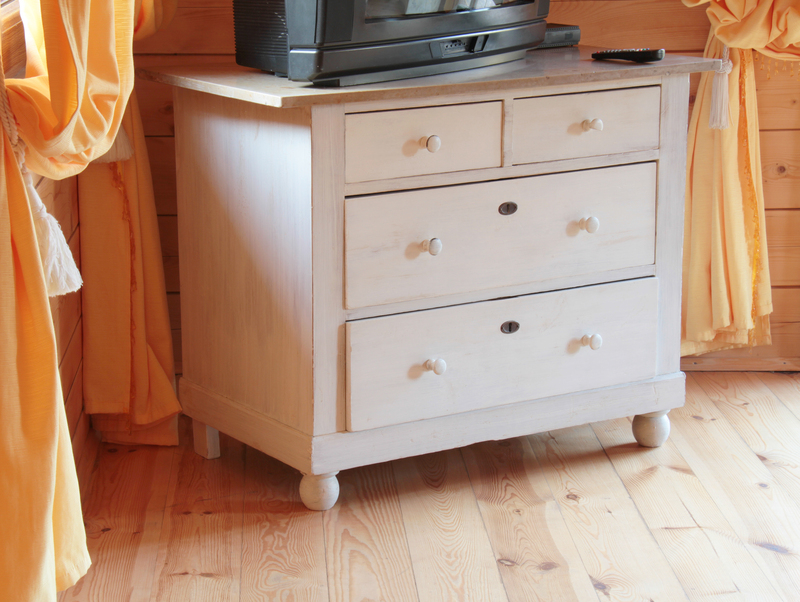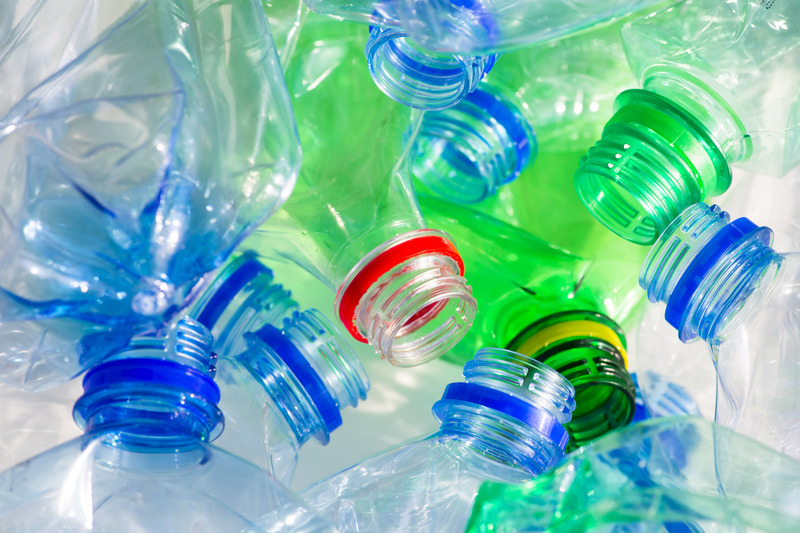Breathing New Life Into Old Pots and Pans via Recycling
If you have a kitchen drawer or cupboard filled with battered cookware, you're not alone. Over time, pots and pans become scratched, warped, or simply fall out of favor. But what do you do with old pots and pans once they've reached the end of their culinary lifespan? Simply tossing them in the trash is not eco-friendly. Recycling old cookware is an excellent way to help the environment while giving these items a new purpose. In this article, we'll explore how you can breathe new life into your used pots and pans through effective recycling, creative upcycling, and sustainable disposal options.
Why Recycle Old Pots and Pans?
Many households find themselves regularly upgrading their cookware as new technologies and non-stick surfaces emerge. Unfortunately, this means many used pots and pans end up gathering dust or being sent to the landfill, contributing to environmental issues.
- Environmental Impact: Throwing away old cookware leads to overflowing landfills, while metals and plastics take hundreds of years to decompose.
- Resource Conservation: Recycling metals from your old kitchenware conserves valuable natural resources and reduces the need for virgin mining.
- Circular Economy: When you recycle or upcycle old pots and pans, you support a circular economy, where products are kept in use for as long as possible.

Understanding Materials: What Are Old Pots and Pans Made Of?
To recycle your cookware responsibly, you must first determine what materials they're made from. Most old pots and pans fall into these categories:
- Aluminum - Lightweight, rust-resistant, and commonly used in both budget and high-end cookware.
- Stainless Steel - Durable, rust-proof, and mostly recyclable.
- Copper - Excellent heat conductor, attractive, and valuable as scrap.
- Cast Iron - Long-lasting, heavy, and typically 100% recyclable.
- Non-Stick & Coated Pans - Often lined with Teflon or ceramic, which affects recycling options.
Identifying the main material of your pan will help you choose the most appropriate and environmentally friendly recycling or reuse method.
How to Prepare Old Pots and Pans for Recycling
Before sending your cookware off for recycling, there are a few key steps to ensure they are accepted and processed efficiently.
- Remove Non-Metal Parts: Take off plastic handles, knobs, and rubber parts if possible. Some recycling centers only accept pure metal items.
- Clean Thoroughly: Wash away food residue and grease, making them less likely to be rejected for contamination.
- Check Labels: Look for recycling symbols or manufacturer recycling information on your cookware.
Recycling Routes for Old Cookware
Disposing of cookware responsibly depends on the type of pan and the local recycling infrastructure. Here are the main options:
1. Local Scrap Metal Yards
Most scrap metal yards accept metal pots and pans, regardless of their condition. These facilities sort and melt down metal items for reuse in manufacturing. Separate aluminum, steel, copper, and cast iron for the best price or acceptance rate.
2. Municipal Curbside Recycling
Some cities allow metal cookware in curbside recycling bins, but always check your local guidelines. If non-stick pans or items with plastic parts aren't accepted, find an alternative recycling drop-off point.
3. Manufacturer Take-Back Programs
Major brands such as Calphalon, Le Creuset, and GreenPan sometimes offer recycling or trade-in schemes. Check their websites or contact customer service for shipping instructions or drop-off locations.
4. Charity Shops or Donation Centers
If your pots and pans are still usable, even if a little old, consider donating them to charity shops, homeless shelters, or community kitchens. Donating extends an object's life and benefits those in need.
5. Special Collection Events or Eco Depots
Many cities host annual events for recycling hard-to-recycle items, including cookware. Search for "household goods recycling day" or "eco depot events" in your area.
Upcycling: Creative New Uses for Old Pots and Pans
Not all cookware is destined for the scrap heap. Upcycling old pots and pans is a fun and sustainable way to give them a second life. Here are some inspiring ideas:
- Garden Planters: Drill drainage holes and reuse battered pots and pans as quirky plant holders for herbs or flowers.
- Bird Feeders: Hang a small saucepan in your yard, fill it with seeds, and enjoy a stylish upcycled bird feeder!
- Wall Clocks: Use the round shape of a frying pan as the base for a funky, kitchen-themed wall clock.
- Candle Holders or Lanterns: Transform old pots into unique holders by adding a candle or small LED lights.
- Creative Art Projects: Repurpose lids as canvases for painting or into mirrors.
Let your imagination run wild! Posting your upcycling creations on social media can inspire others to follow suit, further reducing waste.
How Old Pots and Pans are Recycled
Curious about what happens after you recycle your cookware? Here's a step-by-step breakdown:
- Old pans are collected and sorted by metal type.
- They're cleaned, with all non-metal parts removed and hazardous coatings separated if possible.
- Cookware is shredded for easier processing.
- The metal is melted down, purified, and cast into new forms.
- The recycled metal re-enters the manufacturing supply chain, potentially becoming new pans, car parts, or even building materials.
This saves significant amounts of energy and raw materials compared to producing metals from scratch.
Recycling Non-Stick and Coated Pans: Special Considerations
Many modern pans feature non-stick coatings (like Teflon) or ceramic finishes. These coatings complicate recycling, as they can't easily be melted down with the base metal. Here's what you need to know:
- Teflon/Non-Stick Coatings: Most scrap yards do NOT accept Teflon-coated pans unless the coating is removed. Specialized recycling programs may exist - contact your local facility.
- Ceramic-Coated Pans: Ceramic-coated pans are more likely to be accepted, but check with your recycling center.
- Donating is still an option if your pans are useable despite surface wear.
Always check for local options and dispose of hazardous coatings responsibly to protect the environment.
Can You Repair or Refurbish Old Pots and Pans?
Before you recycle, consider if your pans are truly beyond redemption! Often, with a bit of elbow grease, old cookware can be restored:
- Cast Iron Restoration: Rusty or grimy cast iron pans can almost always be brought back to life! Remove rust, re-season, and enjoy for generations.
- Stainless Steel Cleaning: Remove stains with baking soda, vinegar, or commercial cleaners.
- Handle/Fittings Replacement: Replacement handles for popular brands can be ordered online.
- Re-Coating Services: Some specialty shops offer to re-coat non-stick pans, though this can be expensive.
A little love and attention can keep your favorite pan frying for years to come.
Frequently Asked Questions
Can pots and pans go in the blue recycling bin?
It depends on your local rules. While some municipalities accept small metal items in household recycling, others require you to bring them to a recycling center or scrap yard. Always double-check local guidelines!
What about glass or ceramic bakeware?
Unfortunately, most glass and ceramic cookware can't be recycled through regular curbside programs because of their high melting points and risk of contaminating other recyclables. Look for specialized recycling events or consider donating if the items are undamaged.
Is it safe to donate non-stick pans?
If your non-stick pan is lightly used and not peeling, donation is generally safe. Donate only if you'd be comfortable using the item yourself. Peeling or heavily worn coatings can pose health risks, so in those cases, seek specialized recycling or dispose of them responsibly.

Benefits of Recycling Cookware
- Reduces landfill waste: Every recycled item is one less object taking up valuable landfill space.
- Saves energy: Recycling metals uses far less energy than producing new ones from ores.
- Protects the environment: Recycling prevents pollution and reduces greenhouse gas emissions.
- Supports jobs: The recycling industry provides employment opportunities in communities across the world.
- Encourages thoughtful consumption: Knowing that you can recycle or upcycle old pots and pans makes you a more conscious consumer.
Conclusion: Make Old Pots and Pans Part of a Greener Future
In a world facing urgent environmental challenges, breathing new life into old pots and pans through recycling or upcycling is a simple change that has a big impact. Whether you choose to recycle, donate, upcycle, or restore your cookware, you help keep valuable materials out of landfills and play a part in a more sustainable future.
Next time you're ready to retire your saucepan or skillet, remember: sustainability starts at home. By mindfully recycling your cookware, you'll be cooking up a cleaner planet for generations to come. So, take that old pan off the shelf--and give it a second chance to shine!
Ready to recycle your old pots and pans? Share your stories, upcycling projects, or favorite recycling tips in the comments below and join the movement for greener kitchens everywhere!